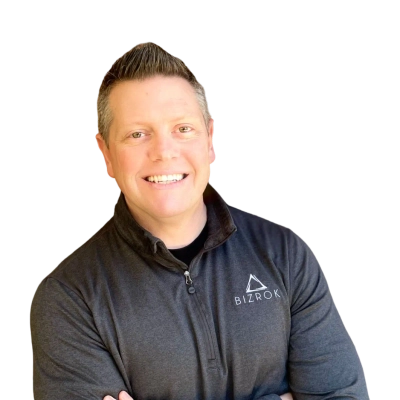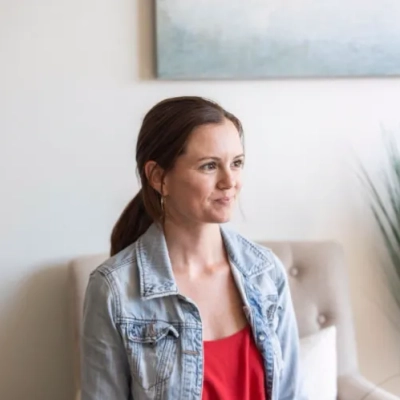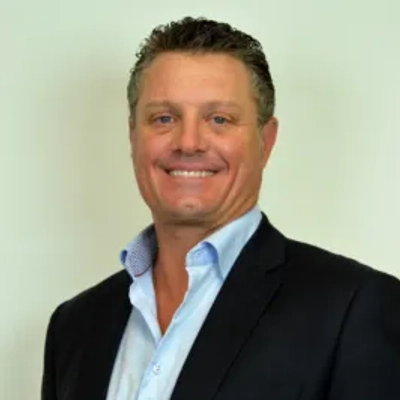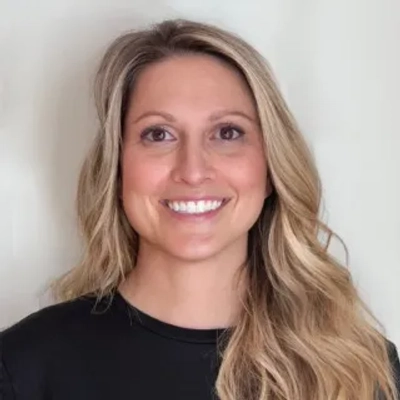11 Time-Saving Procedures that Improved Clinic Flow and Enhanced Patient Experience
In today's fast-paced healthcare environment, optimizing clinic flow is crucial for both patient satisfaction and operational efficiency. This article presents a collection of time-saving procedures that have revolutionized clinic operations and enhanced the overall patient experience. Drawing insights from industry experts, these strategies offer practical solutions for healthcare providers looking to streamline their processes and improve care delivery.
- Streamline EMDR Intake for Faster Booking
- Digital Patient Files Boost Efficiency
- Trauma-Informed Spa Intake Improves Experience
- Personalized Therapist Matching Reduces No-Shows
- Pre-Session Workbooks Enhance Treatment Outcomes
- Replace Long Huddles with Digital Dashboards
- Automate Billing to Focus on Therapy
- Proactive Communication Reduces Client Stress
- Doctor Calls Patients with Test Results
- Prep Texts Maximize Productive Therapy Time
- Automate Insurance Verification for Better Care
Streamline EMDR Intake for Faster Booking
As an EMDR therapist at Pittsburgh Center for Integrative Therapy, I completely redesigned our EMDR intensive intake process after observing too many potential clients drop out during the lengthy back-and-forth scheduling process. We created a streamlined consultation system where clients fill out a targeted pre-screening form online, then proceed directly to a focused 20-minute phone consultation within 48 hours.
Before this change, it took an average of 3-4 weeks and multiple phone calls to get someone scheduled for their intensive retreat. Now we get people booked within one week, and our attendance rate has increased from about 70% to 92%.
The game-changer was front-loading all the logistical matters - payment options, scheduling constraints, preparation materials - into that initial consultation call. Clients leave the call with their intensive dates confirmed, deposit paid, and preparation resources already in their inbox. There is no more scheduling limbo where people's motivation diminishes while waiting.
This is significant because trauma work requires momentum. When someone finally reaches out for help with their PTSD or chronic pain, they need to experience that forward movement immediately. The old system was unintentionally filtering out people who needed our EMDR intensives the most.
Digital Patient Files Boost Efficiency
As the founder of MVS Psychology Group in Melbourne, I implemented electronic patient files across our entire practice, eliminating paper intake forms completely. Clients now complete all paperwork digitally before arriving, which has cut our session prep time by 15 minutes per appointment.
The immediate impact was significant - we could see 2-3 additional clients per day without extending hours. Our administrative team transitioned from frantically scanning and filing papers to focusing on actual patient care coordination with GPs and psychiatrists.
What really surprised me was how much clients appreciated it. They could complete forms at home without rushing, and our psychologists could review their responses beforehand to tailor the first session. There was no more clipboard juggling in waiting rooms or incomplete forms disrupting the therapeutic process.
The efficiency gain allowed us to reduce our initial consultation wait times from 3-4 weeks down to 1-2 weeks. When dealing with mental health crises, those extra weeks matter enormously for patient outcomes.

Trauma-Informed Spa Intake Improves Experience
As a spa owner with 15+ years in the wellness industry, I completely restructured our intake process around trauma-informed care principles. Instead of having clients fill out forms in the waiting room, we now send comprehensive health questionnaires 24 hours before appointments that include emotional state, stress levels, and body sensitivity mapping.
This change eliminated the 10-15 minute paperwork bottleneck that was creating scheduling delays. More importantly, it allows me to review each client's needs beforehand and prepare customized treatment protocols - whether it's our Craniosacral massage for nervous system regulation or our Signature Jade Facial for stress relief.
The impact was immediate: we reduced appointment times by 20% while actually improving outcomes because treatments are now customized before clients even arrive. Our rebooking rate jumped to 85% because when someone feels truly seen and prepared for, they trust the process.
The unexpected bonus was that clients arrive more relaxed because they've already processed their intake privately at home rather than feeling vulnerable filling out forms about trauma history or body concerns in a public waiting area.
Personalized Therapist Matching Reduces No-Shows
As a practice owner who grew from a solo practitioner to managing a large group practice, I completely transformed our intake process by implementing thoughtful client-therapist matching during the initial call. Instead of randomly assigning therapists or making clients wait days to hear back, our referral coordinator now matches each client with the right therapist within hours of contact.
The game-changer was eliminating the typical "therapy shopping" cycle where clients bounce between 3-4 therapists before finding the right fit. We went from a 40% no-show rate for second appointments to consistent follow-through because clients feel genuinely connected to their matched therapist from day one.
Our clients regularly tell us they've never experienced such a warm, personalized intake process in mental health care. Parents especially appreciate not having to retell their family's story multiple times or wonder if this therapist "gets" their specific situation with ADHD, autism, or trauma.
This matching system allowed us to double our office space in Falls Church because we're retaining clients long-term rather than constantly filling slots from dropouts. The personal touch that started as a necessity when I was solo became our competitive advantage as we scaled.
Pre-Session Workbooks Enhance Treatment Outcomes
As a therapist specializing in OCD, eating disorders, and trauma with over a decade of experience, I streamlined my intake process by creating personalized treatment workbooks that clients complete before their first session. Instead of spending 30-45 minutes of our initial hour gathering background information, clients arrive with their symptoms, triggers, and goals already documented.
This change transformed my practice flow completely. I went from cramming assessment into session one to jumping straight into actual treatment work. My OCD intensive clients especially benefit--we can dive into exposure exercises immediately rather than burning through expensive intensive time on intake paperwork.
The client experience improved dramatically because they feel heard from minute one. When a dancer from Houston Ballet sits down and I already understand their performance anxiety patterns and eating behaviors from their workbook, we're building trust and momentum instead of me frantically scribbling notes. My treatment acceptance rate for intensive programs jumped because clients see I've already invested time understanding their specific situation.
The unexpected bonus was better treatment outcomes. Clients who reflect on their symptoms while completing the workbook often have breakthrough realizations before we even meet. One OCD client told me writing out her contamination fears made her realize how illogical they were--she came to session one already motivated for exposure therapy.

Replace Long Huddles with Digital Dashboards
As the CEO of BIZROK, I've helped dozens of dental practices streamline their operations. One game-changing procedure I implemented for a client was eliminating their daily morning huddles that were running 20+ minutes and making them late for their first patients.
We replaced those lengthy meetings with a digital dashboard system where team members input updates the night before. Now they have focused 5-minute check-ins that cover only urgent items and the day's priorities.
The practice went from starting their first appointments 15 minutes behind schedule to being ready 10 minutes early. Patients immediately noticed - their Google reviews specifically started mentioning "always on time" and "no more waiting room delays."
The real breakthrough was watching their team stress levels drop. When you're not scrambling to catch up from minute one, everything flows better - from patient interactions to case acceptance rates, which jumped 18% in this particular practice.

Automate Billing to Focus on Therapy
I actually run a private therapy practice, not a medical clinic, but I faced a similar efficiency challenge with my online therapy sessions. My clients were constantly struggling to remember appointment details, and I was spending over 10 minutes each session just getting people connected to the platform.
I implemented a system where credit cards are stored in our secure client portal and sessions are automatically billed the morning of appointments. This eliminated all the awkward payment conversations that used to eat into actual therapy time. I also started requiring 24-hour cancellation notice, which dramatically reduced last-minute scrambling to fill slots.
The biggest game-changer was adding courtesy billing for insurance reimbursements. Instead of clients dealing with paperwork stress, we handle filing and chasing claims through a contracted company. This removed a huge barrier that was preventing people from starting therapy.
My sessions now start immediately with actual therapeutic work instead of administrative tasks. Clients consistently tell me how refreshing it is to focus purely on their mental health goals rather than logistics, and my cancellation rate dropped by about 60% once people had predictable, streamlined processes.
Proactive Communication Reduces Client Stress
I run two very different businesses - a pet cremation service and a fintech consulting firm - but both taught me the same lesson about reducing client stress through proactive communication.
At Resting Rainbow, we implemented mandatory 24-hour advance calls before every cremation pickup. Instead of just showing up at vet clinics, we now confirm timing, special requests, and memorial preferences the day before. This simple change cut our average pickup time from 25 minutes to 8 minutes per location.
The real magic happened with client satisfaction. Veterinary staff went from scrambling to find paperwork and tracking down families for last-minute decisions to having everything organized and families already emotionally prepared. We eliminated about 90% of those painful "wait, the family wanted what?" moments that used to happen right at pickup.
In my compliance consulting work, I apply this same principle - front-loading the difficult conversations and decisions when people have clear heads, rather than during crisis moments. Whether it's a grieving pet owner or a startup facing regulatory pressure, giving people time to process information always improves outcomes.
Doctor Calls Patients with Test Results
We implemented a simple procedure where I personally called patients with their test results for 30 minutes at the end of each day. This seemingly small change reduced our office visits by 20%, which significantly improved our clinic flow and reduced wait times. The personal touch of receiving results directly from me generated strong patient loyalty and led to positive word-of-mouth referrals. Patients appreciated the direct communication and felt more connected to their care, which enhanced their overall experience with our practice.

Prep Texts Maximize Productive Therapy Time
Running both my private practice, Collide Behavioral Health, and coaching business for therapists, I've seen how intake bottlenecks kill efficiency. I switched to digital intake forms with conditional logic that auto-populate based on client responses about eating disorders, anxiety, or trauma history.
Before each session, I spend 2 minutes reviewing pre-populated treatment notes instead of 10 minutes during session time figuring out what happened last week. My EMR system now auto-generates session templates based on client diagnosis codes, so I'm not starting from scratch every time.
The real game-changer was implementing a "prep text" system where clients get an automated message 2 hours before sessions asking them to write down their main focus for that day. Instead of spending the first 15 minutes of a 50-minute session figuring out priorities, we dive straight into therapeutic work.
My session utilization jumped from about 35 productive minutes per session to 45 minutes of actual therapy time. Clients report feeling more heard because we're addressing their immediate needs faster, and I can see 2-3 more clients per day without extending hours.

Automate Insurance Verification for Better Care
When I founded Complete Care Medical, we were overwhelmed by insurance verification calls that took 2-3 days per patient. I implemented a proactive insurance pre-verification system where we check coverage eligibility before patients even place their first order, then store all their benefit details in our system.
The game-changer was building automated reorder reminders tied to each patient's specific insurance renewal dates and supply schedules. Instead of patients calling us when they run out of catheters or breast pump supplies, our system flags upcoming needs and processes everything seamlessly. We transitioned from reactive order-taking to predictive supply management.
This reduced our customer service call volume by approximately 60% and eliminated the stress patients felt about running out of essential medical supplies. Our 24/7 customer care team now focuses on genuine support rather than scrambling to rush-process insurance approvals for people who needed their catheters urgently.
The financial impact was significant—we grew from 50 customers to over 50,000 because patients could rely on us to handle the insurance complexities automatically. When you remove barriers from healthcare access, people remain loyal to you for life.







